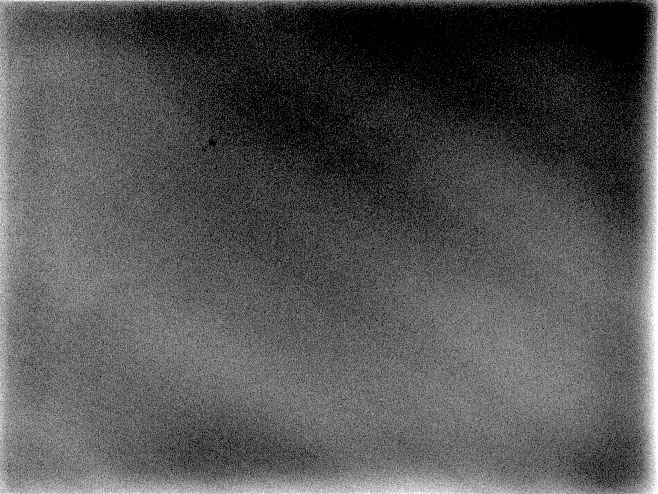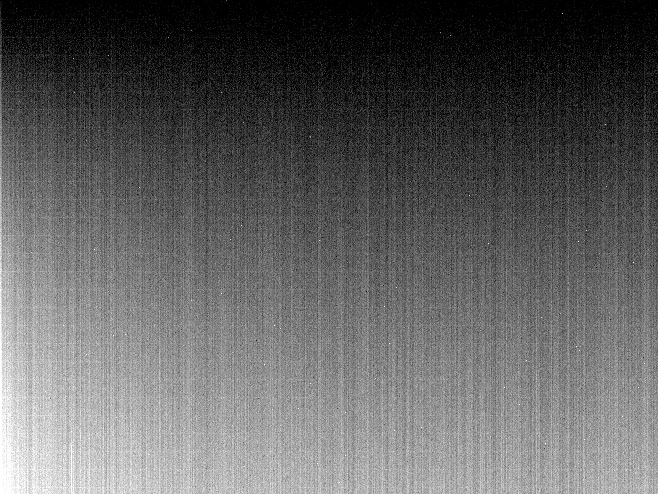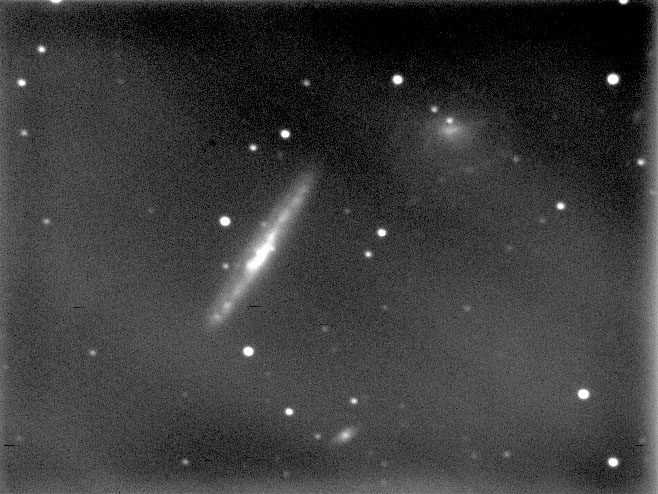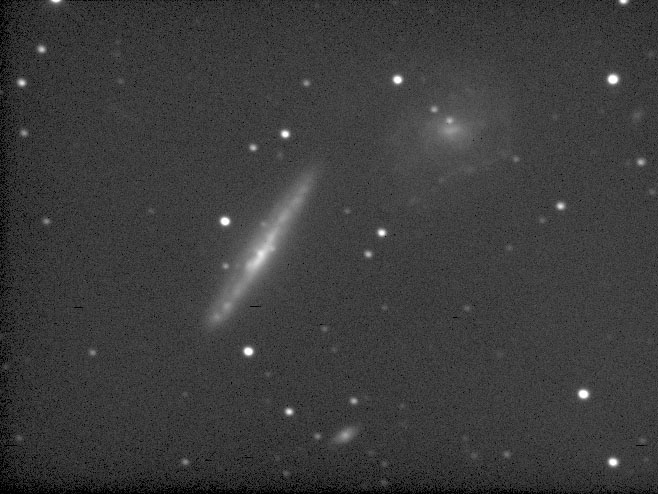
My calibration starts with flats, which are made from actual flats and dark fields. I calculate the final flat like this:
flat = avg ( flat_i - avg ( dark_j ) )
Here is a flat. (background color is set to show light border of image)

As mentioned there is a conspicuous bright border around the flat. Here are the statistics for the flat as reported by AstroArt.
Size ........... 658 x 494
Pixels ......... 325052
Min ............ 19178 @ 205,343
Max ............ 23545 @ 657,179
Background ..... 22326
Average ........ 22310.923
Sum ............ 7252210225
Std.deviation .. 193.06954
The brightening where it is the most noticeable (at right) is from about 22400counts to about 23400counts. That's about 4.5%. It's not as strong around the other sides.
Here is the averaged dark that was used for the flat. However it serves well as an example for darks with that camera in general. 50 exposures were averaged.

There is a noticeable gradient in the lower left corner. The statistics show that the dark is actually pretty flat.
Size ........... 658 x 494
Pixels ......... 325052
Min ............ 1011 @ 55,493
Max ............ 1115 @ 0,6
Background ..... 1058
Average ........ 1058.895
Sum ............ 344195925
Std.deviation .. 12.093997
The gradient is about from 1010counts to 1110counts or 9.9% However as the dark is subtracted it absolute value which is pretty low should not allow for too much an impact on the calibration. The value of the dark does not change a lot with exposure time. 20sec and 240sec have the same average 1058counts.
Here is an uncalibrated average of 20 exposures of 240sec each.

There is a slight brightening at the border of the image on the right and at the bottom. Statistics in an area of blank sky are as follows.
Rectangle ...... [287,109] [512,223]
Pixels ......... 25990
Min ............ 15892 @ 453 , 176
Max ............ 17192 @ 384 , 187
Background ..... 16636
Average ........ 16633.102
Sum ............ 432294329
Std.deviation .. 71.532457
The Max value has hit a star and should be discarded.
Now after calibration.

In most areas of the image the calibration has worked well. However in the left and bottom side seems to be a darkening. It seems as if almost a frame is drawn around the top left and bottom of the image.
A statistic in approx. the same rectangle looks like this.
Rectangle ...... [310,103] [539,205]
Pixels ......... 23690
Min ............ 14800 @ 453 , 176
Max ............ 15859 @ 325 , 164
Background ..... 15521
Average ........ 15521.596
Sum ............ 367706605
Std.deviation .. 40.789675
The std. deviation is much lower (about half) than before indication good calibration.
The drop off toward the bottom is from about 15500counts to about 15375counts
at the edge. That's about 125counts. When the background (darkest overall
pixel) (14661) is subtracted the artifact becomes worse.
Now the statistics in a background area are like this:
Rectangle ...... [309,108] [533,221]
Pixels ......... 25650
Min ............ 139 @ 453 , 176
Max ............ 1198 @ 325 , 164
Background ..... 860
Average ........ 861.15684
Sum ............ 22088673
Std.deviation .. 40.567751
Now the average background level is 861counts. A variation of 125 counts amounts to 14.5%.
An area in the galaxy's arm has the following statistics:
Rectangle ...... [277,271] [288,282]
Pixels ......... 144
Min ............ 1275 @ 277 , 281
Max ............ 1952 @ 281 , 275
Background ..... 1674
Average ........ 1649.4653
Sum ............ 237523
Std.deviation .. 166.85231
So the signal is about 1650 - 860 = 790counts above the background.
Given those signal levels a gradient in the background of 125counts is of quite big concern. I would be interested to find out the origin of the gradient and how I can eliminate it.
Any comments are welcome.
Send me email at, drgert1@yahoo.com
Back to my astronomy home page